1. does it work?
1.1. meta-discussion
1.1.1. Which activites have the biggest payoff for learners
1.1.2. Is the learning model a good model?
1.1.3. Which interventions have the biggest payoff for our system?
2. convening the group
2.1. using Twitter, Facebook, Google+, online communities...
2.2. initial division of labor (to determine: time commitment)
2.2.1. setting up basic infrastructure
2.2.1.1. social media classroom model?
2.2.1.2. aggregator tool?
2.2.1.3. blog?
2.2.1.4. social media accounts?
2.2.1.5. synchronous meeting places?
2.2.2. suggesting topics, course schedule, formats
2.2.3. explaining the project
2.2.4. guiding individual participants
2.2.5. reaching out, telling the world and recruiting new participants
2.2.6. helping new participants
2.3. how to help new participants
2.3.1. provide ways for them to orient themselves quickly
2.3.2. providing individual support
2.4. dipping in and out
2.4.1. not everybody will be constantly active
2.4.1.1. solution: archives of raw material, constant updates of the project
3. pre-existing narratives, workflows (rather different strategies! )
3.1. the making of the peeragogy handbook
3.2. RheingoldYouniversity courses
3.3. MOOCs by Stephen Downes,George Siemens
4. nature of the project
4.1. What skills are required? What skills are you trying to build?
4.1.1. building a PLN and establishing a PLP
4.1.2. connect with others
4.1.3. read, watch, listen and discuss various layers of meaning of texts, audio and video
4.1.4. communicate, establish networks about trends, new developments
4.1.5. learn to look for new stuff, innovation, where few others look
4.1.5.1. literature, history, youth culture, protest culture
4.1.6. recognize and analyze patterns, new trends, disruptive developments
4.1.6.1. how to become a futurist?
4.2. Who is the audience?
4.2.1. students
4.2.1.1. computer sciences
4.2.1.2. literature
4.2.1.3. history
4.2.1.4. engineering
4.2.1.5. education
4.2.1.6. marketing
4.2.1.7. design
4.2.2. professionals
4.2.2.1. trend watchers
4.2.2.2. designers
4.2.2.3. fashion people
4.2.2.4. New node
4.2.3. everyone else
5. structure of the learning
5.1. weekly topics
5.1.1. each co-learner hosts a topic each week
5.1.1.1. will it become shallow?
5.1.1.1.1. organize a panel to enter into an in-depth discussion
5.1.1.1.2. milestone based structure, add gamification elements
5.2. establishing a reading list
5.3. facilitators suggest topic list
5.3.1. ask to comment, suggest additions, changes (use Google Form)
5.4. interview experts (use Google Hangout)
5.5. useful outputs
5.5.1. a group blog? a wiki? an e-book? a video?
5.6. Charter (Google Docs)
5.6.1. mission
5.6.2. norms
5.6.3. members
5.7. assessment
5.7.1. the law of the 'market'
5.7.1.1. will the wiki, blog, etc be visited by others? get comments?
5.7.1.2. people define success for themselves, this is not a school.
5.8. distributed learning
5.8.1. use tag and hashtag to collect individual posts, tweets
5.8.2. use an aggregation tool like gRSShopper
5.8.3. publish weekly overviews of the activities
6. the facilitators
6.1. must be more than one
6.2. have face-to-face meetings
6.3. use paragogical action reviews
6.3.1. what was supposed to happen
6.3.2. what is happening
6.3.3. what is right or wrong
6.3.4. how should it be done differently in the future
6.3.5. share notes
7. constructionism
7.1. learning via designing and making artefacts
7.1.1. making a digital culture handbook?
7.1.2. design a seven week course?
7.1.3. make an introductory video?
7.1.4. organize a(n) (un)conference?
8. personal learning networks (PLNs)
8.1. intoduction to PLNs
8.1.1. social media dashboards
8.1.1.1. RSS readers
8.1.1.2. Netvibes
8.1.1.3. Twitter lists
8.1.1.4. Yahoo! Pipes
8.1.1.5. Social bookmarks
8.1.1.5.1. Diigo
8.1.1.5.2. Delicious
8.1.1.6. Curating tools
8.1.1.6.1. Scoop.it
8.1.1.6.2. Pearltrees
8.1.1.6.3. curated.by
8.1.1.7. Forums
8.1.1.8. Online networks
8.1.1.8.1. facebook
8.1.1.8.2. twitter
8.1.1.8.3. google+
8.1.1.8.4. quora
8.1.1.8.5. reddit
8.1.1.9. blogs
8.1.1.9.1. Wordpress
8.1.1.9.2. Blogger
8.1.1.9.3. Typepad
8.1.1.9.4. Tumblr
8.1.2. PLNs:
8.1.2.1. PLNs are the collections of people and information resources (and relationships with them) that people cultivate in order to form their own learning networks
8.2. individual support & guidance
8.2.1. helping to build a personal learning plan (PLP)
8.2.1.1. What do you most need/want to learn about in the time ahead?
8.2.1.2. What are the best ways you learn, what learning activities will meet your learning needs, what help will you need and how long will it take?
8.2.1.3. What will you put into your personal portfolio to demonstrate your learning progress and achievements?
8.3. Play
8.3.1. as games are an important part in digital culture, should we incorporate gamification elements?
8.3.1.1. quiz?
8.3.1.2. badges?
8.3.1.3. ways to visualize activity (forum postings, blog posts...
